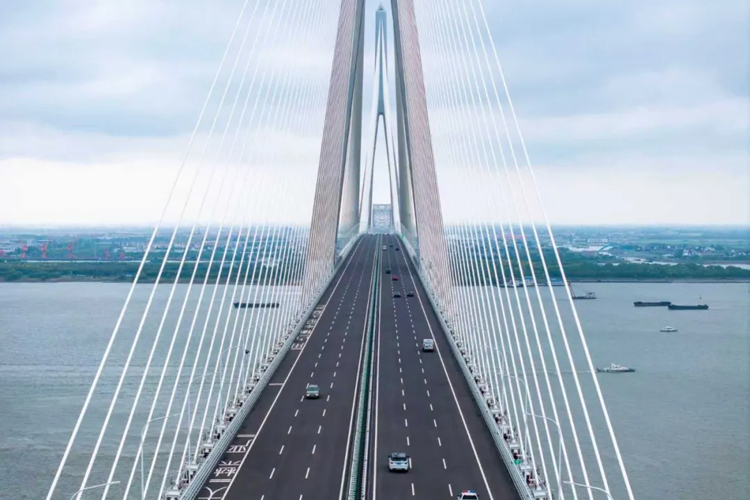The Changtai Yangtze River Bridge in Jiangsu Province—co-built by CCCC—has been officially opened to traffic. It is the world's largest-span cable-stayed bridge and also the longest steel truss arch railway-highway bridge.
The bridge's river-crossing section stretches 10.03 kilometers, including a 5.3-kilometer combined road-rail segment. Its main towers rise 350 meters, with a record-breaking main span of 1,208 meters.
With the bridge now in operation, travel time between Changzhou and Taizhou has been cut from 1 hour 20 minutes to just about 20 minutes. This engineering marvel, a landmark of innovation, is injecting new momentum into the development of the Yangtze River Economic Belt.
Construction began in October 2019 and was completed in August 2025. Throughout the project, the CCCC team employed cutting-edge methods of intelligent construction, prefabrication, and digitalization to overcome formidable challenges and deliver a world-class bridge.
Through process innovation, the project team developed an underwater intelligent soil-taking robot, successfully overcoming the challenge of dredging giant river caissons and setting a record for the fastest sinking speed for large caissons in silty clay layers.
The team also created the world's first intelligent tower crane with a lifting capacity exceeding 10,000 tonnage-meters, capable of lifting 210-tonnage steel tower components to a height of 350 meters, and developed the world's largest-tonnage deck crane, enabling millimeter-level precision in placing steel truss sections weighing up to 1,700 tons.
During main tower construction, smart industrialized methods for reinforced components enabled the structure to rise 1.2 meters per day and cut high-altitude worker numbers by over 60%.
To install the steel truss girders, a digital twin system was used to monitor and analyze construction conditions in real time, helping ensure precision, safety, and reliability every step of the way.
The project has also become a welcoming hub for the modern bridge industry, hosting more than 1,500 training sessions that have brought together over 10,000 participants. It also opened doors to important technical exchanges, industry seminars, and visits from international media.




